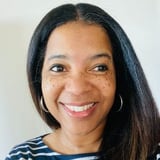Summary
At the heart of any organization, people are the driving force. And the past few years have not been easy on any of us. The pandemic, the great resignation, tech layoffs, bank collapses, among other significant changes, have challenged workers in ways like never before. Fortunately, there is a cure to the human energy crisis, and that cure is: a culture of psychological safety. Join Alla Weinberg, a leading culture designer for organizations undergoing change, for this masterclass and you’ll leave with practical ways to increase psychological safety on your team or organization. In this masterclass, you will: Understand the neurological root cause of the human energy crisis Learn why psychological safety is the cure to burnout and exhaustion Learn how to effectively communicate change
Key Insights
-
•
Psychological safety is not only psychological but fundamentally neurobiological, rooted in the autonomic nervous system.
-
•
Stress from ongoing change is wired as a danger by our nervous system, triggering fight, flight, or freeze responses even if the change is positive.
-
•
Burnout decreases employees’ willingness to speak up, exacerbating psychological safety deficits.
-
•
Context, choice, and connection are essential for employees’ nervous systems to feel safe during organizational change.
-
•
Creating psychological safety requires systemic cultural change, not just individual resilience or benefits like EAPs.
-
•
Historically oppressed groups need explicit policies and protections alongside connection to experience psychological safety.
-
•
The autonomic nervous system processes environmental cues without conscious thought, influencing mental and physical health.
-
•
Leaders should regulate their own nervous systems before communicating changes to avoid triggering employees’ stress responses.
-
•
Intentional practices like personality assessments, sharing personal 'operating manuals,' and openly discussing fears build connection and safety.
-
•
Physical activities and connecting with animals can help shift nervous systems from stress states back to safety.
Notable Quotes
"Mental health challenges are now the norm among employees across all organizational roles."
"Stress drops our operating IQ by half, making it impossible to collaborate or problem-solve effectively."
"Psychological safety is the felt permission for candor — permission to be honest without fear of negative consequences."
"Our nervous system cannot tell the difference between a company reorg and a hungry lion trying to eat you."
"If you don’t understand the why, what, and how of change, don’t communicate it — you’ll only cause more stress."
"Connection is the energy that exists between people when they feel seen, heard, and valued, not about being nice or avoiding disagreement."
"The goal is not to always stay in a safe state, but to create environments where we can recover back to safety quickly."
"People work longer hours because of the fear of saying no and fearing job loss, not because it's sustainable."
"Safety needs to start with your team first, then slowly scale out to other parts of the organization."
"The companies that will attract talent moving forward are those that are most flexible and give people choices."
Or choose a question:















More Videos

"I believed we could do more — more for the company, customers, stakeholders, and ourselves if we had more agency."
Nalini KotamrajuResearch After UX
March 25, 2024

"Society grows great when old people plant trees they know they shall never sit in."
Dean BroadleyNot Black Enough to be White
January 8, 2024

"If you’re not doing the work of addressing your own pain, you won’t be effective in helping others."
Denise Jacobs Nancy Douyon Renee Reid Lisa WelchmanInteractive Keynote: Social Change by Design
January 8, 2024

"If you don’t have the support you need—budget, time, people—your program is at high risk of failure."
Kim Fellman CohenMeasuring the Designer Experience
October 23, 2019

"Good design is honest and yes, the Jewel e-cigarette will honestly kill you."
George AyeThat Quiet Little Voice: When Design and Ethics Collide
November 16, 2022

"Sometimes alignment work isn’t enjoyable, but it’s part of the job for design system success."
Nathan CurtisBeyond the Toolkit: Spreading a System Across People & Products
June 9, 2016

"Platforms need researchers and designers to make them meaningful and intentional for the people they are designed to serve."
Greg PetroffThe Compass Mission
March 10, 2021

"Global and local cultures are closely entwined and always influencing one another."
Chloe Amos-EdkinsA Cultural Approach: Research in the Context of Glocalisation
March 27, 2023

"Having the qualitative and quantitative data together lets us tell a comprehensive story to stakeholders."
Mackenzie Cockram Sara Branco Cunha Ian FranklinIntegrating Qualitative and Quantitative Research from Discovery to Live
December 16, 2022
Latest Books All books
Dig deeper with the Rosenbot
How can national development agencies strategically manage their innovation portfolios to balance risk and impact?
Who are the multiple user types involved in designing services for public sector innovation portfolios?
What challenges do designers face when they do not recognize their work as offering services?
















